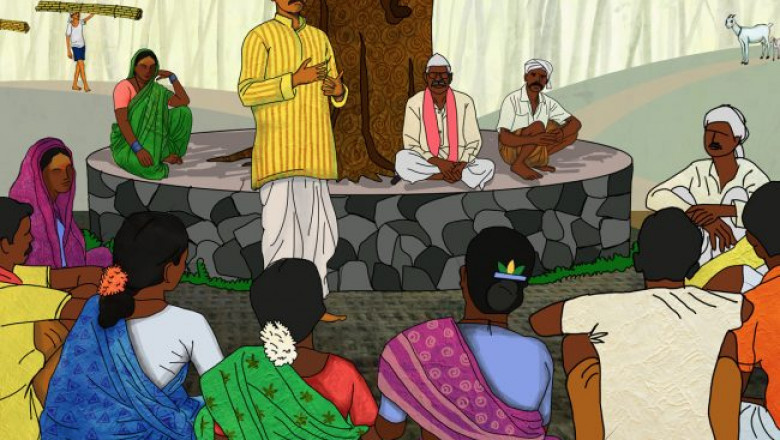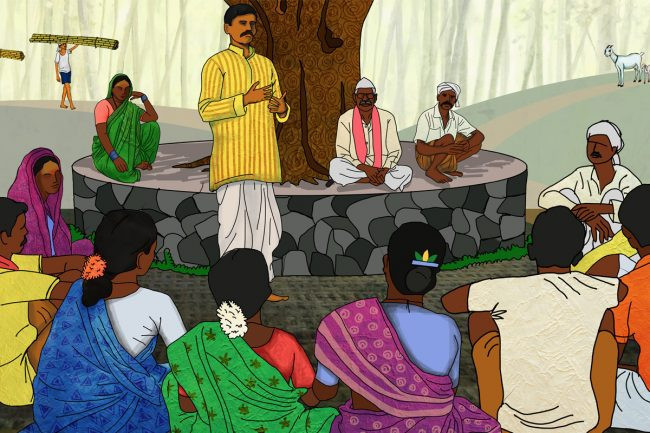views

What PESA Act Represents and What is the Main Motive Behind PESA Act?
The PESA full form, Provisions of the Panchayats (Extension to Scheduled Areas) Act, 1996, is popularly named the PESA act. It is a law enacted by the Government of India to ensure self-governance through traditional Gram Sabhas.
This act was an extension of the provisions of Part IX of the Constitution. And, this is entirely for people living in the Scheduled Areas of India. When talking about Scheduled Areas, they get classified as areas by the Fifth Schedule of the Constitution of India.
In India, the scheduled areas are present in about ten states, the tribal communities dominating the population. Moving further, these designated areas were nowhere found, talked about or covered by the 73rd Constitutional Amendment or Panchayati Raj Act of the Indian Constitution.

The objectives of the Act:
The PESA act 1996, if followed and implemented, can help cope with the traditions and culture that is deep-rooted in India. With that, it gives the opportunity to control, correct and get rid of the loopholes and rejuvenate the dying spirit of traditional self-governance culture.
1. There were specific changes made to extend the provisions of Part IX and make modifications for the scheduled area and the people in it.
2. To give self-rule self-governance for the scheduled area people, who comprise the tribal population.
3. To make village governance a thing and also involve participatory democracy. With that, also give importance to Gram Sabha by making them the nucleus of all activities.
4. To frame and create a suitable administrative framework that describes and holds all sorts of traditional practices necessary for the people.
5. The act came into the picture to ensure all the traditions, customs, regulations, cultures of the communities are correctly maintained, safeguarded and preserved at all costs.
6. To empower panchayat's opinion and consider it necessary at the appropriate levels. Also, let the panchayat have specific powers to fulfil and suffice the tribal requirements.
What are the Features of PESA?
In India, the act is no less than a backbone of the tribunal communities. Offering the tribunal people to preserve their tradition and culture and make decisions for themselves.
Since, in the PESA act 1996, the Gram Sabha makes the decision, the state legislature gets the advisory role to ensure Gram Sabha is advised adequately if needed.
- A village will usually be a group, a hamlet of habitation of people following common tradition and culture.
- A village will have a gram sabha consisting of essential people. And, their names will be given in the electoral roles to make decisions.
- The responsibility of the Gram Sabha is to make sure the custom, tradition and heritage of the village get safeguarded at all costs.
- The role of Gram Sabha in the act is to ensure the culture and community gets identified, thus fulfilling the resources and needs.
- If Panchayat needs funds, they need to request them from the Gram Sabha and provide proper certification for utilisation of funds. It ensures that the funds are appropriately utilised and don't get wasted.
- Gram Sabha will hold power to make many decisions and take appropriate actions, which include;
1.The power to manage the money market lends money to the tribunal community.
2.The power to manage the village and the market
3.The power to have control over institutions and act as a functionary body
4.The power to prevent and reduce the alienation of lands
5.The ability to enforce, restrict or prohibit the consumption of intoxication.
Conclusion
With all that, there also comes challenges and problems with the PESA act. One can consider Panchayat Extension to Scheduled areas to uphold the traditional decision-making process. Precisely like the earlier times where tribunal communities were able to make decisions for themselves without the involvement of outsiders.
Through this amendment that came into existence, a three-tier Panchayati Raj Institution turned out to become a new law. The PESA act 1996 put the power and position directly in the hands of Gram Sabha of the tribunal communities to make necessary amendments and decisions.
This act recognises the traditional needs of decision making in communities and stands for people focusing on self-governance.












